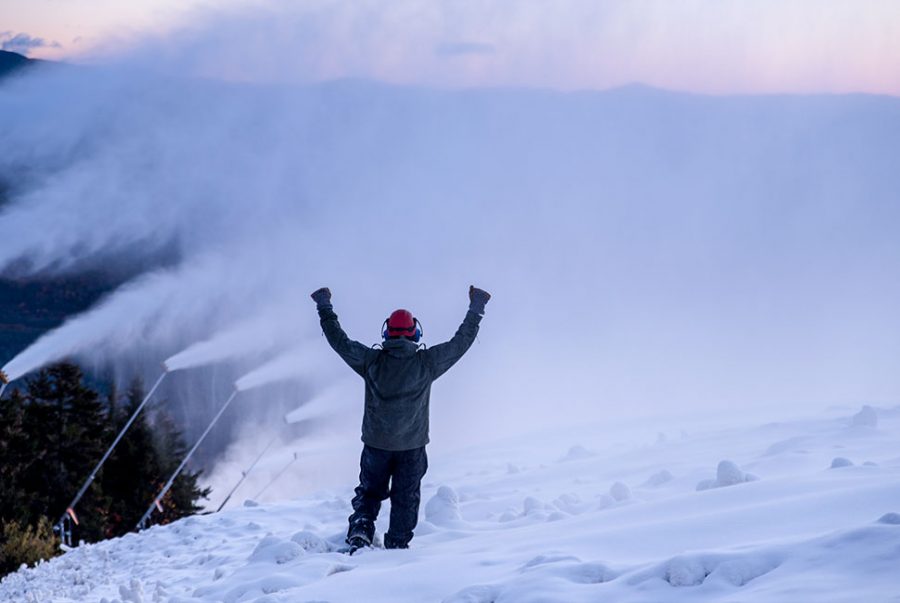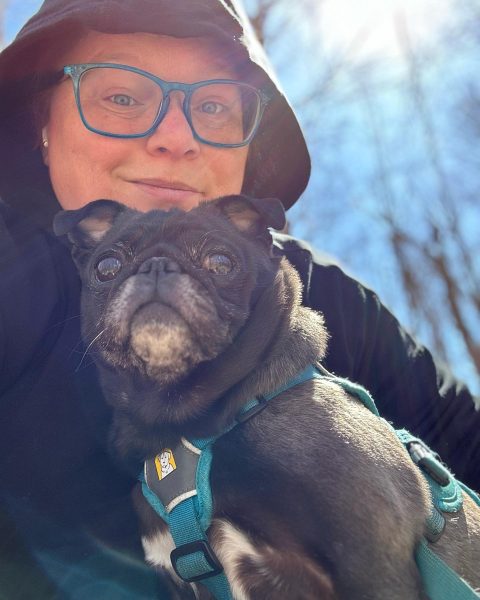An inside look on how to make snow
’Tis the season — for snowmaking that is. Over the past month, snowguns have been blasting on the hillsides across the Northeast Kingdom, creating an artificial wonderland that allows those die-hard winter fans to dip their toes (or skis) into an icy cold heaven of snow a bit earlier than is natural.
Killington has been open since early November and Wildcat Mountain in New Hampshire opened its lifts on Nov. 11, with one beautiful white trail covered top to bottom. Bretton Woods and Sugarloaf did the same, and Stowe and Sugarbush in Vermont opened a week later. All this, even when the grass on campus is still green and the ground not yet frozen.
Ski mountains seem to have proven that they don’t need to wait for winter to make snow. So what do they need?
“There are four things every snowmaker needs to make snow,” says Zach Higley, a New Hampshire snowboarder and previous employee of Attitash Mountain Resorts. “Water, air, weed, and whiskey.”
Discounting the latter two, Higley is right. A snowmaker’s essentials are water and air, and a high pressure system that can blast the two together, encouraging them to form snowflakes. And even if ski mountains can open without winter, they still need some of Mother Nature’s cooperation.
“You do need to have temperatures in the low 20’s to start.” says Josh Marinack, a snowmaker who has worked in Wisconsin and New Hampshire. “Then temperatures no higher than low 40’s to continue making snow and maintain a base.”
The earliest forms of snowmaking have been around since the 1930s, when ski jumpers in Toronto were forced to cover their jump top to bottom with shaved ice from a nearby skating rink in order to open for an important competition. Realizing the ice was faster than dry snow, ski jumpers began using crushed ice on their jumps.
The idea developed from there, and in 1949 Tey Manufacturing Company brought one of their original snowmaking prototypes to Mohawk Mountain in Connecticut and produced the first documented machine-made snow for alpine skiing.
The industry has come a long way. Now most modern ski resorts have impressive snowmaking infrastructures, relying on dual pipe systems that run all over the mountain, water and air pressure ratios, and of course, natures cooperation. Most of all, ski mountains rely on snowmakers to manage these important factors.
“Snowmakers will pretty much spend their entire shift walking top to bottom of runs adjusting guns.” says Marinack. “Every time the wind changes the guns need to be adjusted or it will blow onto the wrong spot or back into itself.”
Snowmakers do more than just manage the position of the guns. They also must monitor temperature, humidity, wind and cloud cover as all of these can affect what type of snow is being made, and Marinack says there are a few.
“Wet heavy snow will freeze the ground for you, most places do this to create a base layer.” he says. “Once that is down, you can add more air to create the mid-layer, which is about 50/50 air and water.”
And once the groomer has come through over the mid-layer to smooth out bumps and compress the snow, the finish layer is blown on top. “It’s white, it’s fluffy, it makes things look pretty.”
Every mountain has different standards for how much snow they need to open, but surprisingly, it doesn’t seem like much. Mountains this season opened with an advertised 2-6 inch base depth. As the winter goes on, that number will increase dramatically.
“What people don’t realize is that they are skiing on about 8 feet of snow.” says Chris Dernt, a retired snowmaker. “Sometimes even more if you get into the freestyle parks.”
The snowmaking season won’t last forever, once the trails have a reliable base and the natural snow starts dumping, most ski areas turn off their guns, hoping their snow will last until closing day.
“In Wisconsin…we would stop making snow Jan. 1 and we will not produce any more just due to the fact that it’s not financially a good idea.” says Marinack.
It is an expensive endeavor. Most ski areas start making snow in November, but this can be risky. Snowmaking requires a large investment of money early in the season before the ski area knows what the climate, temperatures and income will be. If Mother Nature doesn’t cooperate huge amounts of money could be lost.
But if a ski area skips on snowmaking even more money could also be lost.
“Without snowmaking you could lose between one and $3 million a year.” says Marinack. “The most profitable times at a ski mountain are holiday breaks. Being open for Thanksgiving is huge for the bottom line.”
While some resorts choose to skip the pre-season snowmaking, most have accepted it as a must. The New England ski industry depends on the snowmaking equipment and the snowmakers themselves in order to open on schedule.
The Snowmaker’s shifts are long, anywhere form 8-12 hours, and the work is hard, adjusting guns, shoveling equipment, and trudging through artificial snow storms.
“Most people would say that riding the sled was their favorite part,” Marinack says, “but for me it was doing all that hard work just to watch a few people come down the run on opening day.”






